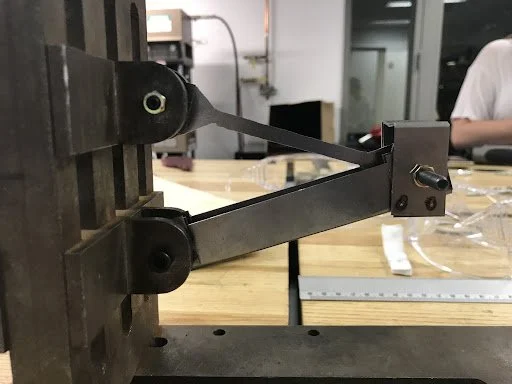Load Bearing Bracket
Presented with the challenge to design and build a two member sheet metal bracket that has the capacity to withstand a downward load between 1,500N - 1,800N. The bracket has to consist of two members, AD and BC, that are joint at point D. The final design was selected taking into consideration many aspects, but prioritizing efficiency, strength, cost effectiveness and manufacturability. After deciding on a final design, we began manufacturing and testing brackets to better understand the factors that we wish to optimize. Through a process of manufacturing, testing, and analysis our group was able to manufacture a bracket that adheres to the criteria set forth by the project, with some forms of error.
Manufacturing Design
Through three iterations of bracket failures, we were able to test our designs, analyze what made them fail, and formulate how we may improve . One issue was the load bearing point, as the force was no longer being applied in a theoretical 2D scenario, but over a 3D plane. To address this, the team adapted a reinforced cap design that would not impact the performance of the bracket itself, but experience failure modes separate from the bracket components while evenly distributing force along the 2D cross section. It was noted that errors in performance were largely not due to theoretical design, but errors in manufacturing. This emphasized the importance of upholding engineering principles, tolerancing, and regulations not only in theory, but also in practice.
The design consists of three pieces manufactured with 1018 Steel. Two pieces make up the actual bracket (members BC and AC) and one piece is a cap placed on top of connection point C, distributing the force applied along the cross section of the members. Before manufacturing, we ensure that our sheet of steel is at least a size of 130 x 65 mm. Steps for manufacturing include: cutting steel pieces, bending, welding, a second round of cutting and shaving, drilling holes, and the final assembly. As the project progressed, we found key issues in tolerances created by human error were resulting in unsatisfactory results.


